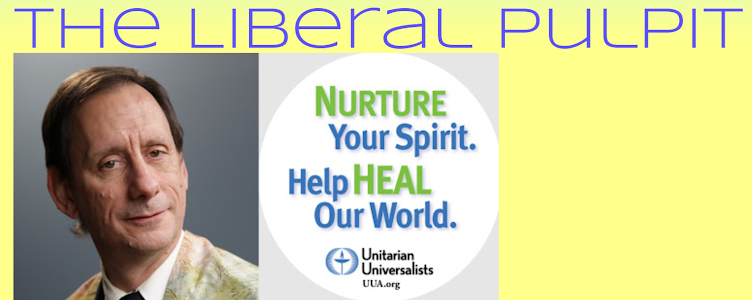Christopher Hitchens was, in his time, I would say the crankiest of the cranky denouncers of religion. He seemed to have cultivated an image of being joyless and permanently annoyed. Yet even Christopher Hitchens, it turns out, had religion. It took a Unitarian Universalist minister to coax it out of him, but he had it. My colleague Rev. Marilyn Sewell interviewed Christopher Hitchens, and in the course of their conversation Hitchens declared:
“It's innate in us to be overawed by certain moments, say, at evening on a mountaintop or sunset on the boundaries of the ocean. Or, in my case, looking through the Hubble telescope at those extraordinary pictures. We have a sense of awe and wonder at something beyond ourselves, and so we should, because our own lives are very transient and insignificant. That's the numinous, and there's enough wonder in the natural world without any resort to the supernatural being required. . . . I know it's not enough for us to eat and so forth. We know how to think. We know how to laugh. We know we're going to die, which gives us a lot to think about, and we have a need for, what I would call, ‘the transcendent’ or ‘the numinous’ or even ‘the ecstatic’ that comes out in love and music, poetry, and landscape.”Christopher Hitchens said that! Who knew he had it in him?
At least one politician, Al Gore, seems to have dark green religion. Way back in 1992, his book, Earth in the Balance, says:
“We must make the rescue of the environment the central organizing principle of civilization. . . . As a politician, I know full well the special hazards of using ‘spiritual’ to describe a problem like this one . . . . But what other word describes the collection of values and assumptions that determine our basic understanding of how we fit into the universe?”Disney cartoon movies from the mid-1990s express dark green religion. "The Lion King" sung to us of the "Circle of Life" that had to be respected and balanced, and in "Pocahontas," Grandmother Willow teaches of belonging to nature and of the sacred interconnections within the web of life. Pocahontas sings,
“You think you own whatever land you land on; the earth is just a dead thing you can claim.The 2009 film, Avatar, asked “us to see that everything is connected, all human beings to each other, and us to the Earth.”
But I know every rock and tree and creature has a life, has a spirit, has a name.”
There may be more religion, more spirituality, in movies these days than there is in some churches.
If you are a subscriber to Surfing magazine (as most readers of this blog naturally would be!), then you might recall the July 2008 issue which proclaims in large letters on the cover, “Surfing is a religion,” and in letters twice as big above that, it says, “Nature = God.” The article inside -- by Bron Taylor – analyzes surfing as aquatic nature religion and quotes from a number of surfers who understand their practice as spiritual. As one surfer put it:
“The ocean has a powerful energy and it connects you to the earth.”Dude!
Dark green religion is, indeed, popping up all over the place these days! At the same time that it is everywhere, it is also nowhere. Dark green religion has no institutional home: no physical building, membership list, meetings, committees, or mission statement. As much as the apparatus of institutions elicits a semi-involuntary "ugh" reaction, only people who commit to working together, using the tools of purpose and organization that constitute an institution, have a chance of effecting transformation -- of themselves or of the world.
Next: Does dark green religion need institutionalization?
* * *
This is part 4 of 5 of "The Ecospiritual Imperative"
Next: Part 5: "The Institution of Dark Green"
Previous: Part 3: "Green Religion and Dark Green Religion"
Beginning: Part 1: "Soteriology and Ecology"


No comments:
Post a Comment